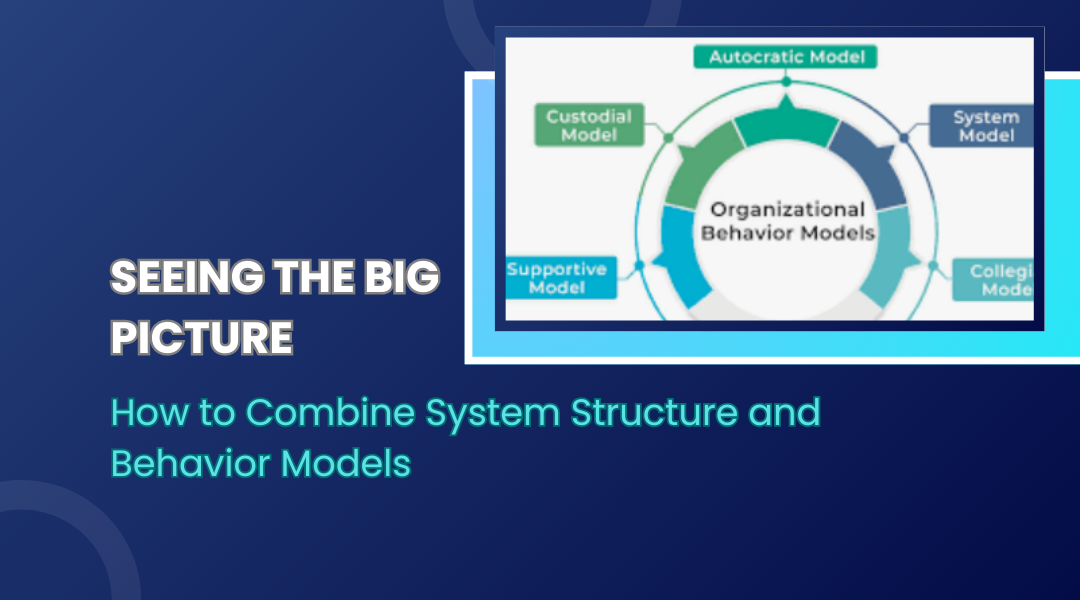Imagine trying to assemble a complex piece of furniture with only half the instructions. That’s what it’s like trying to design systems using only Block Definition Diagrams (BDDs) or Internal Block Diagrams (IBDs) alone. The real magic happens when you learn to use these tools together – like having both the exploded view and step-by-step assembly guide for your system design.
The Yin and Yang of System Modeling
BDDs: The Bird’s Eye View
Think of BDDs as your system’s organizational chart. They answer fundamental questions:
- What are the major components?
- How are they related?
- What belongs to what?
Real-world example: For an autonomous warehouse robot, your BDD would show:
- Main system blocks (Navigation, Object Handling, Power)
- Their relationships (Power supplies Navigation)
- Composition (LIDAR is part of Navigation)
IBDs: The Under-the-Hood Blueprint
IBDs take one of those blocks and show its guts:
- Exactly how subcomponents connect
- What flows between them
- Interface requirements
Continuing our example: The Navigation IBD would reveal:
- How LIDAR talks to the processor
- Power distribution to sensors
- Safety cutoff triggers
Why You Need Both Views
- Prevents “Forest for the Trees” Syndrome
- BDD keeps you focused on overall architecture
- IBD ensures you don’t overlook critical interactions
- Catches Design Flows Early
- Spots mismatches between intended structure and actual implementation
- Example: BDD shows wireless communication, but IBD reveals missing antenna port
- Bridges Team Communication Gaps
- Managers grasp the big picture from BDDs
- Engineers get implementation details from IBDs
A Practical Integration Approach
Step 1: Start with the 50,000-Foot View
Begin with BDD to establish system boundaries and major components. For a smart HVAC system, this might include:
- Climate Control Unit
- Zone Sensors
- Actuators
- User Interface
Pro Tip: Use color coding to distinguish between:
- Physical components (blue)
- Software modules (green)
- External interfaces (orange)
Step 2: Drill Down with Surgical Precision
Select one BDD block at a time for IBD treatment. The Climate Control Unit deserves its own detailed breakdown:
- Microcontroller
- Communication module
- Power regulation
- Safety monitoring
Watch For: Components that appear in multiple IBDs – this often indicates a need to refactor your BDD structure.
Step 3: Validate the Handshake
Ensure perfect alignment between diagrams:
- Every IBD component must trace to BDD elements
- All BDD relationships must have corresponding IBD connections
- Interface specifications must match at both levels
Common Pitfall: Finding “hidden” components in IBDs that weren’t in the BDD. These are either:
- Legitimate omissions (update BDD)
- Implementation details that don’t belong at system level
Real-World Example: Electric Vehicle Charging Station
BDD Structure
- Charging Unit
- Payment System
- Grid Interface
- User Terminal
IBD Deep Dive: Charging Unit
Reveals critical details the BDD doesn’t show:
- Power conversion path:
- Grid AC → Rectifier → DC-DC converter → Vehicle
- Control signals:
- Pilot line communication
- Ground fault detection
- Thermal management links
Integration Benefit: Engineers can see how the power conversion chain supports the BDD’s “Grid Interface” relationship while accounting for all necessary subcomponents.
Advanced Integration Techniques
- Layering Approach
- Level 0: System context (BDD)
- Level 1: Subsystem breakdown (BDD)
- Level 2: Critical component IBDs
- Traceability Matrices
Create a spreadsheet linking:- BDD elements to requirements
- IBD components to BDD blocks
- Interfaces to verification tests
- Cross-Diagram Validation
Implement a checklist:- Do all IBD ports appear as BDD interfaces?
- Are all BDD composition relationships realized in IBDs?
- Do flow directions match at both levels?
When Integration Reveals Problems
- The Phantom Component
IBD shows a temperature sensor that’s not in the BDD. Is it:- An essential missing requirement?
- An implementation detail that should be abstracted?
- The Broken Chain
BDD indicates power flows from A to B, but IBD shows no direct connection. Maybe:- Missing intermediary components
- Incorrect abstraction level
- Interface Inconsistencies
BDD specifies CAN bus, but IBD shows direct wiring. This flags:- Protocol conversion needs
- Documentation errors
Tools That Make Integration Easier
- Model-Based Systems Engineering (MBSE) Platforms
- Maintain live links between BDD and IBD elements
- Automatically flag inconsistencies
- Enable click-through navigation between views
- Visual Differentiation
- Use distinct line styles for BDD vs. IBD connections
- Apply consistent color schemes across diagrams
- Implement clear version matching
- Collaboration Features
- Shared diagram reviews
- Comment threads on integration points
- Change tracking across views
The Payoff: Better Systems Faster
Teams that master BDD-IBD integration typically see:
- 30-40% reduction in integration issues
- Faster onboarding for new team members
- More accurate cost and timeline estimates
- Fewer change orders during implementation
Remember: The goal isn’t perfect diagrams—it’s reliable systems. Your models should serve the design, not the other way around. Start simple, iterate often, and let the integration evolve as your understanding deepens.
Final Pro Tip: Schedule regular “integration health checks” where you walk through key BDD-IBD relationships. Many teams find weekly 30-minute reviews catch most issues before they become costly problems.
